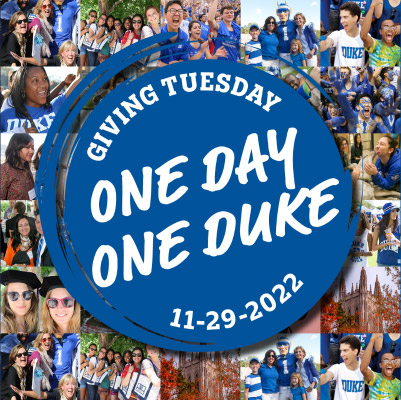Finding Cures by Stressing Out Cells
Finding Cures by Stressing Out Cells
Our cells are stressed and Duke biologist Gustavo Silva wants to help.
By Mary-Russell Roberson
Cells can be stressed by things like ultraviolet light, pollution, pathogens, and run-of-the-mill aging. Under normal circumstances, cells implement stress-busting strategies in response, but sometimes stress overwhelms those strategies.
“The cells sense the damage and try to increase the defense,” says Silva, PhD, assistant professor of biology. “But this is not without limit. There is a moment that the damage is beyond the cell's capacity to deal with it and that's when we see problems. How can we make cells more resistant and healthier, so they can withstand the kind of damage that can lead to disease?”
Silva studies oxidative stress, which is when stress leads to a buildup of certain molecules called reactive oxygen species in cells. Reactive oxygen species, also known as free radicals, can interfere with other molecules in the cell, gumming up the works and even leading to disorders including cancer, Alzheimer's disease, and Parkinson's disease.
Silva, who recently received funding from the Chan Zuckerburg Science Diversity Leadership award, seeks to understand the intricate molecular pathways that govern stress and stress response. He hopes that illuminating these processes could fuel research into treatments for a wide variety of diseases and conditions related to oxidative stress. “Without the foundational knowledge, there's nothing that can be done,” he says. “You can never create a drug if you don't understand how the process works.”
In general, the biological processes within our bodies are remarkably resilient to a wide variety of stresses because they have to be. Sometimes we don't have food or water when we're hungry or thirsty. Or we're too cold but have no coat. Or we have to breathe wildfire smoke for days. Despite all this, the cells in our body mostly manage just fine. They have evolved various processes to sense damage, repair cells, create new ones, and get rid of damaged ones.
Silva studies these processes in yeast cells, which, despite their simplicity, work in some of the same ways our cells do. In particular, he studies the role of a gene called Rad6, which encodes for a protein by the same name that plays a prominent role in orchestrating the stress response by bringing together, or conjugating, other proteins.
But that's not all Rad6 does. “Rad6 is all over the place,” Silva says. “It's involved in control of protein synthesis in response to stress. It has a function in DNA repair. It's involved in metabolic changes.”
In humans, mutations in the gene that is analogous to yeast's Rad6 are even associated with a type of intellectual disability called Nascimento Syndrome.
Silva is keen to learn more about Rad6 not only because it's involved in multiple foundational cellular processes, but also because it's one of a larger class of conjugating proteins. Understanding Rad6 could potentially shed light on its compatriots. “The knowledge we create around Rad 6 can allow us to create a road map for other diseases mediated by a similar process,” he says.
In Silva's lab, Duke senior Sofia Guerrero is working on a project with yeast that might eventually help explain how mutations in the human analog of Rad6 relate to intellectual disability. Specifically, she is comparing normal yeast strains to yeast with Rad6 deleted to learn more about Rad6's role in energy metabolism. In humans, it could be that a misfire in energy metabolism leads to neurons malfunctioning or not developing properly in the first place.
“We're not working with neurons; we're working with yeast,” Guerrero says. “But we're hoping the things we determine about how Rad6 is working in yeast cells could potentially, in the future, be correlated to how the neurons are obtaining their energy.”
As part of her project, Guerrero is looking at the energy powerhouses of the cell — mitochondria. Silva didn't have much experience studying mitochondria, but help was nearby. “Everything is so connected at Duke,” Silva says. “If I need an expert in a specific area, it's easy.” In this case, he reached out to Chantell Evans, PhD, assistant professor of cell biology in the School of Medicine, who shared her knowledge and experience with Silva and Guerrero.
Guerrero, who is planning to pursue a career in biomedical research, appreciates the experience she's gained in the process of research — like collaborating with other experts — in addition to the basic science knowledge about molecular processes. And she values Silva's mentorship: “He is very much a supportive mentor and very much challenges me to go after opportunities. He is always there if I want to ask questions, either research-related or career-related.”
For his part, Silva is intentional about mentorship, for which he recently received the Dean's Award for Excellence in Mentoring. “You have to develop an inclusive environment where people can do the best of their work,” he says. “If students have the support and training they need, they can thrive. This is part of our mission, to develop and foster the new generation of students.”
